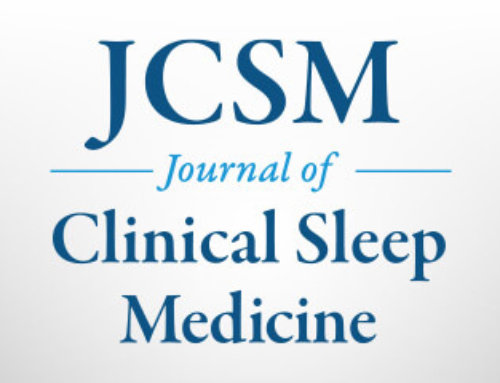EMBARGOED FOR RELEASE
June 11, 2008, at 12:01 a.m.
CONTACT:
Kathleen McCann
(708) 492-0930, ext. 9316
WESTCHESTER, Ill. – A research abstract that will be presented on Wednesday at SLEEP 2008, the 22nd Annual Meeting of the Associated Professional Sleep Societies (APSS), is the first to report strong associations between disturbed rest/activity rhythms and mortality rates in older, community-dwelling (non-institutionalized) men.
The study, funded by the National Institute on Aging and authored by Misti L. Paudel, of the University of Minnesota-Twin Cities in Minneapolis, focused on 3,053 community-dwelling men aged 67 years and older. Rest/activity biological rhythms were obtained, and specific measures of these rhythms included the time of the peak of the rest/activity rhythm (acrophase), the height of the rest/activity rhythm (amplitude) and the robustness or strength of the rest/activity rhythm (F-value). Each was expressed as quintiles (i.e., the data were distributed into five equal parts, each containing a fifth of the sample population).
All models were controlled for multiple potential confounders, including age, race, alcohol, health status, impairments in activities of daily living scale, and common medical conditions. The results showed that men with the lowest amplitude (i.e., lowest quintile) had higher mortality rates than men with the highest amplitude (i.e. highest quintile). A similar association was observed between men with less robust rhythms and higher rates of mortality. There was a U-shaped association between mortality rates and timing of peak activity (acrophase), with mortality rates greatest in men with the earliest and latest time of peaks of the rest/activity rhythms (furthest from the mean).
“The association between rest/activity rhythm disruptions and mortality has been studied in cancer patients and older, institutionalized adults with Alzheimer disease,” said Paudel. “However, our study is the first to report strong associations between characteristics of rest-activity rhythms and death in older, community-dwelling (non-institutionalized) men. It is uncertain whether the relationship between rest/activity circadian rhythms and mortality in older people is causal, or whether rest/activity circadian rhythms represent a potent biomarker related to increased risk of death. More research is needed in order to understand the physiologic and biological mechanisms underlying these associations, as well as the contribution of poor health.”
Not sleeping well can lead to a number of problems. Older adults who have poor nighttime sleep are more likely to have a depressed mood, attention and memory problems, excessive daytime sleepiness, more nighttime falls and use more over-the-counter or prescription sleep aids. In addition, recent studies associate lack of sleep with serious health problems such as an increased risk of obesity, cardiovascular disease and diabetes.
While most people require seven to eight hours of sleep a night to perform optimally the next day, older adults might find this harder to obtain. Older adults must be more aware of their sleep and maintain good sleep hygiene by following these tips:
- Establishing a routine sleep schedule.
- Avoiding utilizing bed for activities other than sleep or intimacy.
- Avoiding substances that disturb your sleep, like alcohol or caffeine.
- Not napping during the day. If you must snooze, limit the time to less than one hour and no later than 3 p.m.
- Stick to rituals that help you relax each night before bed. This can include such things as a warm bath, a light snack or a few minutes of reading.
- Don’t take your worries to bed. Bedtime is a time to relax, not to hash out the stresses of the day.
- If you can’t fall asleep, leave your bedroom and engage in a quiet activity. Return to bed only when you are tired.
- Keep your bedroom dark, quiet and a little cool.
Although sleep patterns change as people age, disturbed sleep and waking up tired every day are not part of normal aging. Those who have trouble sleeping are advised to see a sleep specialist at a facility accredited by the American Academy of Sleep Medicine (AASM).
More information about “sleep and growing older” is available from the AASM at https://www.SleepEducation.com/Topic.aspx?id=30.
The annual SLEEP meeting brings together an international body of 5,000 leading researchers and clinicians in the field of sleep medicine to present and discuss new findings and medical developments related to sleep and sleep disorders.
More than 1,150 research abstracts will be presented at the SLEEP meeting, a joint venture of the AASM and the Sleep Research Society. The three-and-a-half-day scientific meeting will bring to light new findings that enhance the understanding of the processes of sleep and aid the diagnosis and treatment of sleep disorders such as insomnia, narcolepsy and sleep apnea.
SleepEducation.com, a patient education Web site created by the AASM, provides information about various sleep disorders, the forms of treatment available, recent news on the topic of sleep, sleep studies that have been conducted and a listing of sleep facilities.
Abstract Title: Association between Rest/Activity Rhythms and Mortality in Community-Dwelling Older Men
Presentation Date: Wednesday, June 11
Category: Circadian Rhythms
Abstract ID: 0133
# # #








